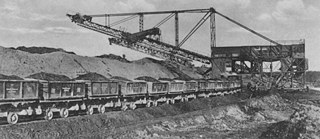Traces along the Wild Atlantic Way
The hydroelectric power station Ardnacrusha

The hydroelectric plant on the River Shannon in County Clare, built by the German firm Siemens-Schuckert, can be described as a milestone in Irish history. Today it still generates power for ESB.
When Ireland became independent in 1922, most of the country had no access to electricity. The idea of harnessing the power of the Shannon had been around since the 1840s but seemed too expensive. It took shape when an Irish engineer, Thomas McLaughlin (1896-1971), joined Siemens-Schuckert in Berlin in 1922. He proposed to the new Irish government the “Shannon Scheme”, the world’s first national electricity system, that would cost a fifth of the State’s annual revenue budget.It was an enormous undertaking and many doubted whether Ireland would ever need all the electricity the scheme could supply.
Siemens’ involvement as the principle contractor was critical in persuading politicians and the public that it all made sense. The German imprint on the work, which began in 1925 and finished in 1929, was unmistakable. The generating station that houses the four huge turbines is, with its very high-pitched roof and rows of dormer windows, obviously Germanic. But Irish people took great pride in Ardnacrusha too: as well as being an economic success, it was a great psychological boost. It served as a model for other large-scale electrification projects worldwide.
Visitor Information:
ESB welcomes visitors to Ardnacrusha power station for pre-booked tours only (max. 25 participants). The site is not accessible for visitors without appointment.
Please contact ESB for bookings and further information:
+353 (0)1 676 5831
„German Traces in Ireland“ is a project of the Goethe-Institut Irland.